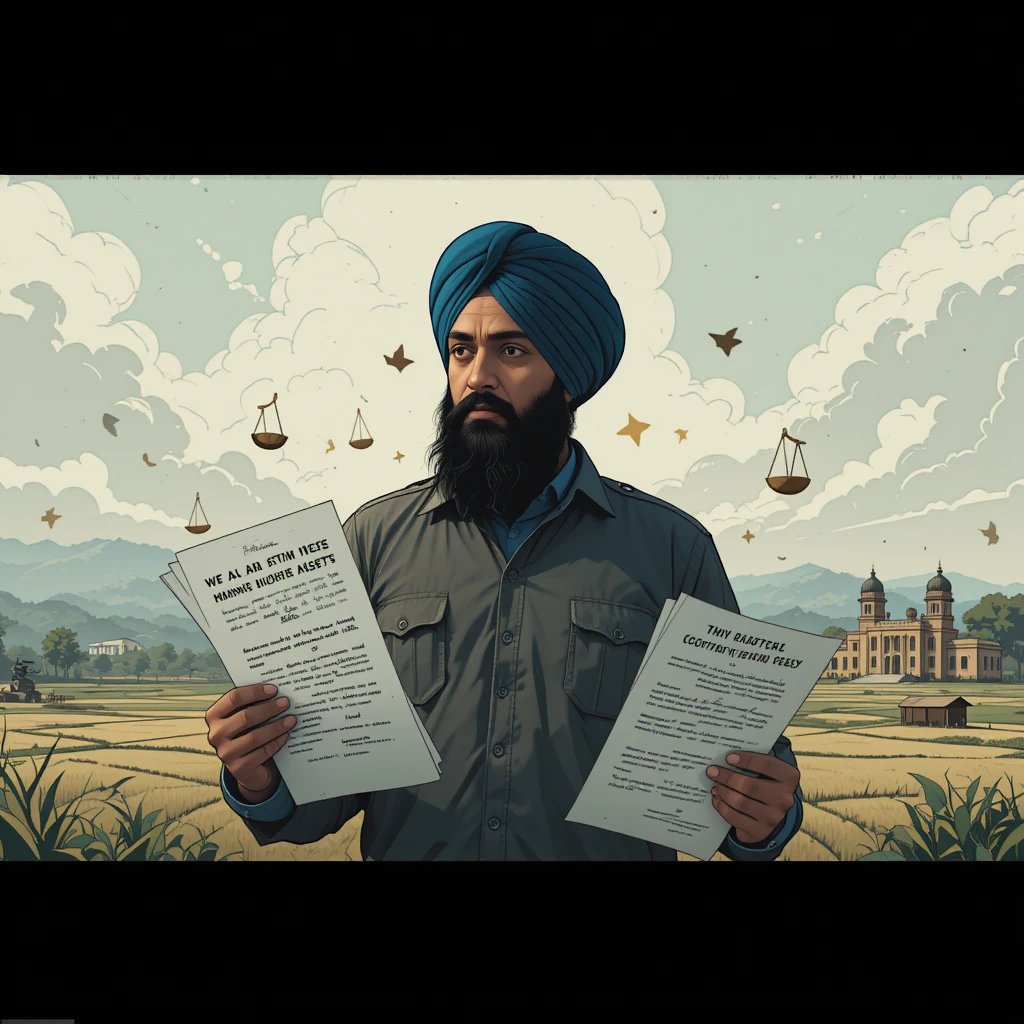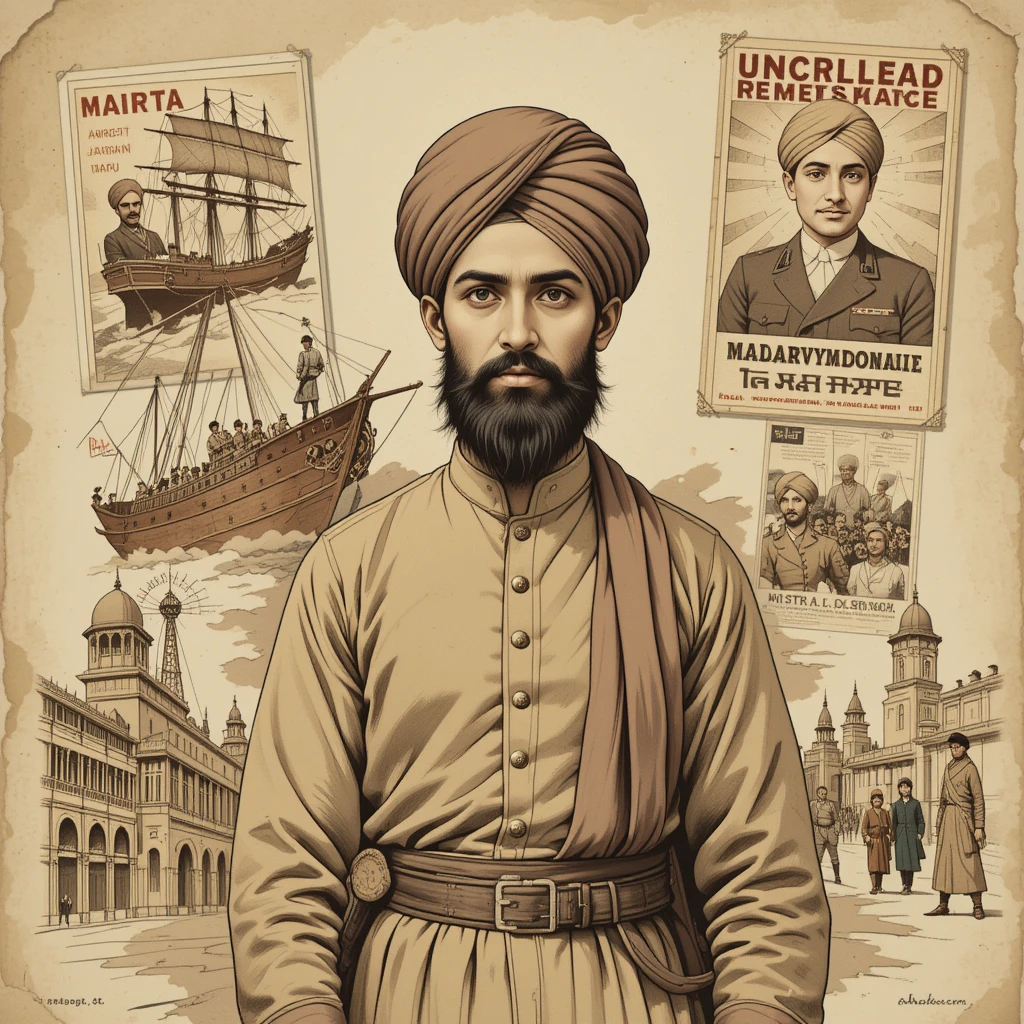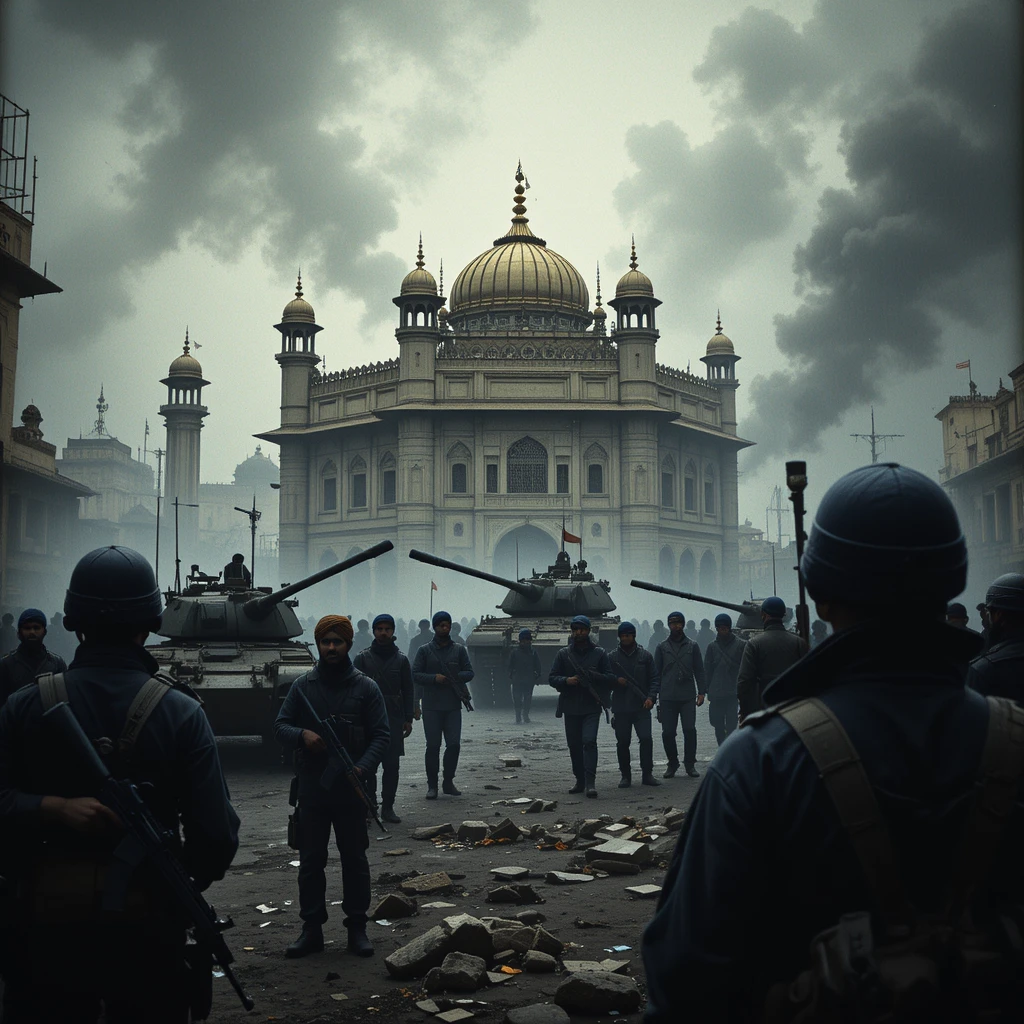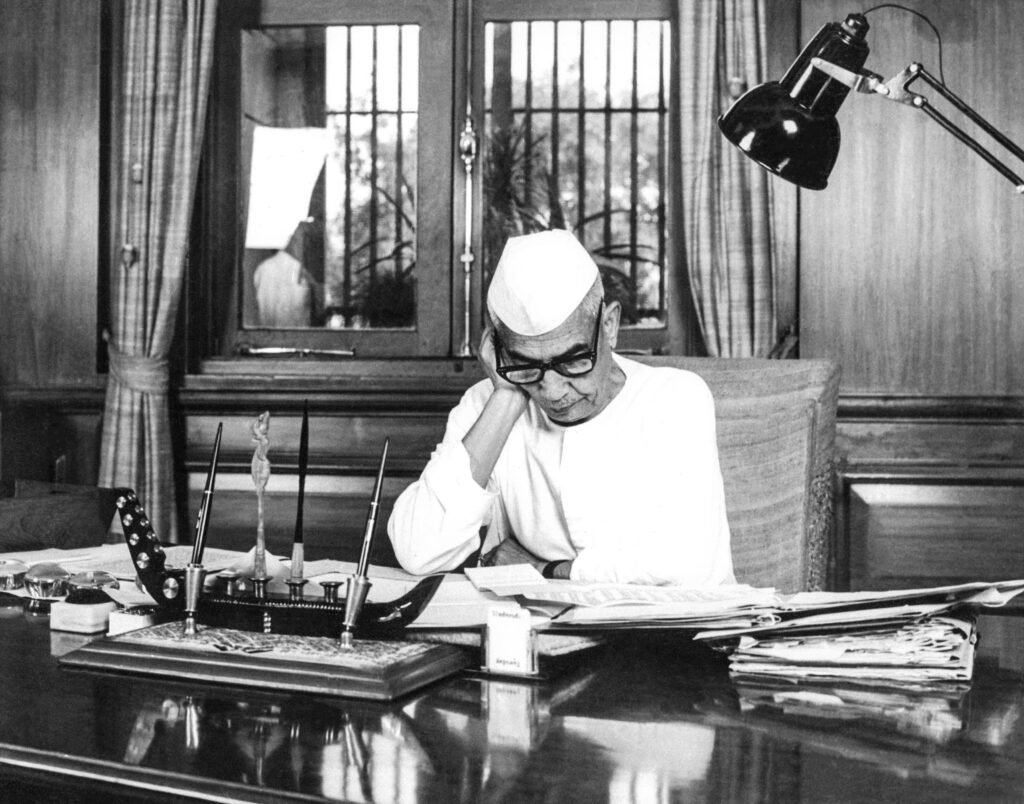Introduction
Jaswant Singh Khalra (1952–1995) was a Sikh human rights activist whose relentless investigations exposed the systematic extrajudicial killings and secret cremations of over 25,000 individuals, including 2,000 police officers, by the Punjab Police during the militancy period in Punjab, India (1984–1995). His work challenged the impunity of state institutions, bringing global attention to human rights abuses. Tragically, Jaswant Singh Khalra’s courage led to his abduction, torture, and murder in 1995, a crime for which six police officers were later convicted. His legacy continues to inspire justice movements worldwide. The biopic Panjab ‘95, starring Diljit Dosanjh, aims to portray Khalra’s story but has faced significant controversy due to censorship demands in India. This article provides a comprehensive account of Jaswant Singh Khalra’s life, his activism, and the contentious issues surrounding Panjab ‘95, supported by verified evidence from credible sources.

Table of Contents
Roots of Resistance: Early Life and Family Legacy
Jaswant Singh Khalra was born on September 18, 1952, in Amritsar, Punjab, into a family with a profound history of defiance. His grandfather, Harnam Singh, was a key figure in the Ghadar Movement, a revolutionary organization founded in 1913 to overthrow British colonial rule in India. Harnam Singh was also a passenger on the Komagata Maru, a ship that sailed from British Hong Kong to Vancouver, Canada, in 1914 with 376 Punjabi immigrants. Denied entry due to discriminatory Canadian immigration laws, the ship returned to India, where Harnam Singh was arrested and tried in the Lahore Conspiracy Case, enduring imprisonment for his activism (Komagata Maru Foundation, 2014). This legacy of standing against injustice deeply influenced Jaswant Singh Khalra’s commitment to truth.

Raised in Amritsar, the spiritual heart of Sikhism, Khalra was immersed in a community that valued courage and service. He trained as an engineer but pursued a career in banking, becoming the director of a cooperative bank in Amritsar by the 1980s. Married to Paramjit Kaur, a librarian and later a human rights advocate, Khalra led a stable life with their two children, Navkiran Kaur and Janmeet Singh. However, the violent unrest in Punjab during the 1980s would transform Jaswant Singh Khalra into a human rights crusader.
Punjab’s Dark Decade: The Militancy Context
The 1980s and early 1990s were a turbulent period in Punjab, marked by a Sikh militant movement seeking greater autonomy or a separate state, Khalistan. Fueled by economic disparities, political exclusion, and religious tensions, the movement gained momentum after Operation Blue Star in June 1984. This military operation aimed to remove militant leader Jarnail Singh Bhindranwale from the Golden Temple, Sikhism’s holiest site, resulting in significant civilian casualties and widespread outrage among Sikhs (Human Rights Watch, 1991).
The assassination of Prime Minister Indira Gandhi by her Sikh bodyguards on October 31, 1984, triggered anti-Sikh riots across India, killing thousands, particularly in Delhi (Mitra, 1985). In response, the Indian government enacted draconian laws like the Terrorist and Disruptive Activities (Prevention) Act (TADA) and the Armed Forces (Punjab and Chandigarh) Special Powers Act. These laws granted the Punjab Police sweeping powers to detain suspects without trial, fostering a climate of impunity that enabled extrajudicial killings, torture, and enforced disappearances (Amnesty International, 1992). It was in this environment of unchecked state power that Jaswant Singh Khalra began his activism.

The Genesis of Activism
Jaswant Singh Khalra’s journey into human rights activism began in the early 1990s, sparked by the disappearances of colleagues and acquaintances, presumed detained or killed by the Punjab Police. Determined to seek answers, Khalra joined the human rights wing of the Akal Takht, a key Sikh religious authority, in 1994. Collaborating with activist Jaspal Singh Dhillon, he began documenting cases of enforced disappearances, initially as a personal mission to uncover the truth.
Khalra’s early inquiries revealed a pattern of police abductions, often targeting young Sikh men under the pretext of counterinsurgency operations. Families were left without information, and official records were either falsified or inaccessible. Jaswant Singh Khalra’s resolve to bring these stories to light led him to a groundbreaking discovery: the systematic use of secret cremations to conceal state-sponsored killings.

Exposing the Cremation Ground Atrocities
In 1995, Jaswant Singh Khalra and Dhillon conducted a meticulous investigation into municipal records at cremation grounds in Amritsar, Tarn Taran, and Patti. Their findings were staggering: the Punjab Police had secretly cremated over 6,000 bodies, labeled as “unidentified,” to cover up extrajudicial killings. By analyzing firewood purchase records and cremation logs, Khalra estimated that approximately 25,000 individuals, including Sikhs and dissenting police officers, had been killed across Punjab, their bodies disposed of to erase evidence (Khalra, 1995).
Among the most shocking revelations was the murder of around 2,000 police officers who refused to participate in or cover up these atrocities. Khalra documented how the police staged “encounters”—fabricated shootouts—to justify killings, followed by secret cremations at municipal grounds. His findings, presented at a press conference in January 1995, implicated senior officials, including Director General of Police K.P.S. Gill, in orchestrating this campaign of violence (Ensaaf, 2007). Jaswant Singh Khalra’s report, supported by official records, was later validated by human rights organizations like Human Rights Watch and Amnesty International (Human Rights Watch, 1995).
Khalra’s bold public statements, including his claim that “the police have killed more people than the militants,” challenged the state’s narrative of “counterinsurgency success” and made him a target of the authorities.
Abduction and Murder: The Price of Truth
On September 6, 1995, Jaswant Singh Khalra was washing his car outside his home in Amritsar when a group of plainclothes Punjab Police officers abducted him. Witnesses, including his wife, Paramjit Kaur, reported that the officers arrived in an unmarked van, forcibly took Khalra, and drove away, ignoring his protests. Neighbors corroborated the account, later testifying in court (Supreme Court of India, 2011).
According to evidence uncovered during legal proceedings, Khalra was taken to a police station in Tarn Taran, where he was subjected to brutal torture. Kuldip Singh, a former police officer turned whistleblower, testified that he saw Khalra in custody, chained and severely beaten. Interrogated about his investigations, Khalra refused to retract his findings. In October 1995, senior officers, allegedly acting on higher orders, murdered him. His body was reportedly dismembered and dumped in the Harike canal near the Sutlej River to eliminate evidence (Ensaaf, 2014).
The abduction of Jaswant Singh Khalra sparked outrage among human rights activists and the Sikh community. Paramjit Kaur immediately filed a habeas corpus petition in the Punjab and Haryana High Court, demanding information about her husband’s fate. The court’s inaction prompted her to escalate the case to the Supreme Court of India, initiating a decade-long struggle for justice.
The Legal Battle for Accountability
The disappearance of Jaswant Singh Khalra galvanized a movement for accountability. In 1996, the Supreme Court transferred the investigation to the Central Bureau of Investigation (CBI), citing evidence of police complicity. The CBI confirmed that Khalra had been abducted by officers under the command of Senior Superintendent of Police Ajit Singh Sandhu, who was implicated in overseeing the operation.
After years of legal battles, marked by witness intimidation and delays, a CBI court in Patiala convicted six police officers in 2005 for Khalra’s abduction and murder. The convicted included Deputy Superintendent of Police Ashok Kumar, Assistant Sub-Inspectors Amarjit Singh and Jasbir Singh, and Constables Kuldip Singh, Surinderpal Singh, and Prithipal Singh. They were initially sentenced to seven years imprisonment, with two officers receiving life sentences (The Hindu, 2005).
In 2007, the Punjab and Haryana High Court enhanced the sentences of four officers to life imprisonment without parole, citing the “heinous” nature of the crime. The Supreme Court upheld these convictions in 2011, rejecting appeals and criticizing the “atrocities committed by Punjab Police” during the militancy period (Supreme Court of India, 2011). However, senior officials like K.P.S. Gill and Sandhu (who died by suicide in 1997) were never prosecuted, highlighting the challenges of holding powerful figures accountable.
Paramjit Kaur’s Unyielding Mission
Following her husband’s murder, Paramjit Kaur Khalra became a formidable advocate for justice, continuing Jaswant Singh Khalra’s work. She founded the Khalra Mission Organization to document human rights abuses and support victims’ families. Paramjit Kaur traveled globally, testifying before international bodies like the United Nations and collaborating with organizations like Ensaaf and Human Rights Watch. Her testimony, including Khalra’s reports and witness accounts, was crucial in securing the 2005 convictions (Ensaaf, 2014).
Despite threats to her safety, Paramjit Kaur remained steadfast, embodying the courage of Jaswant Singh Khalra. Her efforts ensured that the Punjab disappearances remained a global human rights issue. In 2011, the National Human Rights Commission (NHRC) directed a high-level state committee to probe 657 militancy-era cases of official agencies cremating unclaimed bodies, an issue Khalra had investigated (NHRC, 2011).
Global Recognition and Legacy
Jaswant Singh Khalra’s investigations provided the foundation for subsequent human rights reports, including Ensaaf’s documentation of over 20,000 enforced disappearances in Punjab (Ensaaf, 2007). His work prompted international scrutiny of India’s human rights record, with organizations like Amnesty International calling for independent probes (Amnesty International, 1995). The Supreme Court of India and the NHRC certified the validity of Khalra’s data, affirming the scale of the atrocities he exposed.
In 2017, Fresno, California, honored Jaswant Singh Khalra by renaming Victoria Park as Jaswant Singh Khalra Park, recognizing his contributions and the Sikh diaspora’s connection to his legacy. City Council member Oliver Baines compared Khalra to Martin Luther King Jr., highlighting his significance to the Sikh community (Fresno Bee, 2017). Khalra’s story has also inspired cultural works, notably the biopic Panjab ‘95, starring Diljit Dosanjh, which has faced significant controversy in India.
The Controversy Surrounding Panjab ‘95
The biopic Panjab ‘95, directed by Honey Trehan and produced by Ronnie Screwvala’s RSVP Movies, aims to portray the life and struggle of Jaswant Singh Khalra. Starring Diljit Dosanjh as Khalra, alongside Arjun Rampal and Suvinder Vicky, the film has been in development since 2022 but has faced significant hurdles due to censorship demands by India’s Central Board of Film Certification (CBFC). The controversy has sparked debates about artistic freedom, political censorship, and the legacy of Jaswant Singh Khalra.
Censorship Demands and Delays
The CBFC has delayed the release of Panjab ‘95 since it was submitted for certification in December 2022. Initially titled Ghallughara (a term referencing Sikh massacres), the film was renamed Panjab ‘95 to reflect the year of Khalra’s death. The CBFC demanded extensive changes, escalating from 85 to 127 cuts, including:
- Removal of Khalra’s Name: The CBFC insisted on renaming the protagonist, arguing that using Jaswant Singh Khalra’s name could “sway sentiments” and offend the Sikh community. Trehan and Screwvala argued that this would undermine the film’s purpose as a biopic and disrespect Khalra’s legacy, as he is revered as a martyr by Sikhs (News18, 2024).
- Title Change: The CBFC demanded the removal of “Punjab” from the title, suggesting Sutlej instead. Trehan questioned the logic, noting that the story is set in Punjab and involves Punjabi police officers (Times of India, 2025).
- Content Alterations: The CBFC requested the removal of references to political figures (e.g., Indira Gandhi), documented human rights abuses, the district of Tarn Taran, the national flag, and mentions of Canada or the UK. A scene containing Gurbani (Sikh sacred hymns) was also targeted, deemed “provocative” (News18, 2024; BollywoodShaadis, 2025).
- Historical Accuracy: The CBFC argued that the film could not claim to be based on real-life incidents, citing concerns about inflaming sentiments. Trehan submitted 1,800 pages of documentation to prove the film’s factual accuracy, but the CBFC remained unmoved (The Indian Express, 2025).
The film was slated for a world premiere at the Toronto International Film Festival (TIFF) in 2023 but was pulled a day before its scheduled screening, with sources suggesting political pressures due to Canada’s significant Sikh population (Hindustan Times, 2025).
Diljit Dosanjh’s Response and Public Reaction
Diljit Dosanjh has been vocal about the censorship issues. On January 17, 2025, he announced the film’s international release on February 7, 2025, without cuts, stating, “Panjab ‘95 Releasing Internationally Only in Theaters on 7th of February 2025. P.S. Full Movie, No Cuts” (India TV, 2025). However, on January 20, 2025, Dosanjh informed fans via Instagram Stories that the release was postponed due to “circumstances beyond our control,” expressing pain over the delay and sharing a quote attributed to Khalra: “I pray to the Guru, who identified with truth, to keep this light lit” (Mashable India, 2025).
The trailer for Panjab ‘95 was removed from YouTube in India, prompting accusations of censorship from fans and activists (LiveMint, 2025). Paramjit Kaur Khalra, who reviewed the script in 2022 and expressed satisfaction, demanded its release without cuts, arguing that the changes disrespect her husband’s legacy and the Sikh community (BollywoodShaadis, 2025). The Sikh community has rallied behind the film, viewing it as a tribute to Jaswant Singh Khalra’s sacrifice.
Broader Context: Sardaar Ji 3 Controversy
The controversy surrounding Panjab ‘95 has been compounded by issues with Dosanjh’s other film, Sardaar Ji 3, a horror-comedy released globally on June 27, 2025, but banned in India due to the casting of Pakistani actress Hania Aamir. The Federation of Western India Cine Employees (FWICE) called for a boycott and demanded the cancellation of Dosanjh’s citizenship, citing tensions between India and Pakistan following the Pahalgam terrorist attack in April 2025 (Hindustan Times, 2025; Times of India, 2025).
Dosanjh defended the decision, noting that Sardaar Ji 3 was filmed in February 2025, before the attack, when relations were stable. He supported the producers’ decision to release the film overseas, citing their financial investment (BBC, 2025; LiveMint, 2025). Critics like filmmaker Anurag Kashyap argued that the outrage was a “smokescreen” for ideological censorship, with Dosanjh targeted for challenging the majority narrative (The Guardian, 2025). The Sardaar Ji 3 controversy has drawn attention to Panjab ‘95, with some suggesting that Dosanjh’s prominence and the sensitive themes of both films have made him a target for censorship.
Critical Analysis of Censorship
The CBFC’s demands for Panjab ‘95 reflect a broader trend of censorship in India, particularly for films addressing politically sensitive topics. The insistence on removing references to Punjab, Khalra’s name, and historical figures like Indira Gandhi suggests an attempt to sanitize the narrative of state-sponsored violence during the militancy period. Critics argue that this undermines artistic freedom and suppresses historical truth, especially given Khalra’s revered status in the Sikh community (Al Jazeera, 2025).
The CBFC’s actions also raise questions about impartiality. Trehan noted that another film, Emergency, focusing on Indira Gandhi’s life, faced no such restrictions, highlighting perceived inconsistencies (Times of India, 2025). The demand to rename Khalra’s character and alter the title disregards the film’s factual basis, as Trehan submitted extensive documentation to prove its accuracy. This selective censorship aligns with concerns raised by activists about the state’s efforts to control narratives around the Punjab militancy, perpetuating the silencing of victims’ families (The Indian Express, 2025).
Impact on Human Rights Discourse
Jaswant Singh Khalra’s investigations fundamentally reshaped the discourse on human rights in India. By using official records to expose state crimes, he set a precedent for activists challenging impunity in conflict zones like Kashmir and the Northeast (Human Rights Watch, 2006). His case demonstrated that state actors could be held accountable, though the lack of prosecution against senior officials like K.P.S. Gill underscores systemic challenges.
Khalra’s methodology—relying on municipal records and eyewitness accounts—became a model for documenting human rights abuses. His findings inspired subsequent investigations, such as the NHRC’s probe into 657 cremation cases, and continue to inform advocacy efforts by organizations like Ensaaf (NHRC, 2011; Ensaaf, 2007). The controversy surrounding Panjab ‘95 highlights the ongoing sensitivity of Khalra’s findings, suggesting that the state remains wary of revisiting the militancy period’s human rights violations.
Conclusion
Jaswant Singh Khalra’s life was a testament to the power of truth in the face of oppression. From his early investigations to his tragic murder, Khalra exposed the horrors of Punjab’s militancy period, giving voice to thousands of victims. His legacy, carried forward by Paramjit Kaur and global advocates, continues to inspire the fight for justice. The controversy surrounding Panjab ‘95 underscores the challenges of commemorating Khalra’s work in a politically charged environment. The CBFC’s extensive cuts and delays reflect a broader struggle over historical truth and artistic freedom in India.
As Panjab ‘95 awaits release, Jaswant Singh Khalra’s story remains a clarion call to confront injustice. His sacrifice reminds us that silence in the face of oppression is complicity, and the truth, as Dosanjh stated, “will finally come out” (Mashable India, 2025). Whether through activism or film, Khalra’s legacy endures as a beacon of courage and accountability.
References
- Amnesty International. (1992). India: Human Rights Violations in Punjab. London: Amnesty International.
- Amnesty International. (1995). India: Determining the Fate of the Disappeared in Punjab. London: Amnesty International.
- Ensaaf. (2007). Punjab’s Disappeared: A Report on Enforced Disappearances in Punjab. San Francisco: Ensaaf.
- Ensaaf. (2014). Protecting the Killers: A Policy of Impunity in Punjab, India. San Francisco: Ensaaf.
- Fresno Bee. (2017). “Fresno Park Renamed to Honor Sikh Human Rights Activist Jaswant Singh Khalra.” Fresno Bee, August 15, 2017.
- Human Rights Watch. (1991). Punjab in Crisis: Human Rights in India. New York: Human Rights Watch.
- Human Rights Watch. (1995). Dead Silence: The Legacy of Abuses in Punjab. New York: Human Rights Watch.
- Human Rights Watch. (2006). Protecting the Killers: A Policy of Impunity in Punjab, India. New York: Human Rights Watch.
- Khalra, Jaswant Singh. (1995). Press Conference Statement on Secret Cremations in Punjab. Amritsar, January 1995.
- Komagata Maru Foundation. (2014). The Komagata Maru Journey. Vancouver: Komagata Maru Foundation.
- Mitra, Sumit. (1985). “The Anti-Sikh Riots of 1984.” India Today, November 15, 1985.
- National Human Rights Commission. (2011). Order on Punjab Cremation Cases. New Delhi: NHRC.
- Supreme Court of India. (2011). State of Punjab v. Kuldip Singh & Others. New Delhi: Supreme Court of India.
- The Hindu. (2005). “Six Policemen Convicted in Khalra Case.” The Hindu, November 18, 2005.
- The Indian Express. (2025). “Who was Jaswant Singh Khalra, subject of Diljit Dosanjh’s unreleased film ‘Punjab ’95’?” The Indian Express, July 4, 2025.
- Al Jazeera. (2025). “Diljit Dosanjh’s new film is a global success. Why can’t Indians watch it?” Al Jazeera, July 19, 2025.
- Times of India. (2025). “Diljit Dosanjh’s unrecognizable look in ‘Punjab 95’ poster sparks buzz amid censor board controversy.” Times of India, July 13, 2025.
- News18. (2024). “CBFC Orders Diljit Dosanjh’s Jaswant Singh Khalra Biopic To Make 120 Cuts, Change Title: Report.” News18, September 26, 2024.
- BollywoodShaadis. (2025). “Diljit Dosanjh As ‘Jaswant Singh Khalra’ In ‘Punjab 95’: Things To Know About The Controversial Film.” BollywoodShaadis, January 12, 2025.
- India TV. (2025). “Punjab 95: Diljit Dosanjh confirms there are no cuts in human rights activist Jaswant Singh Khalra’s biopic.” India TV, January 17, 2025.
- Mashable India. (2025). “Diljit Dosanjh Reacts To His Controversial Film Punjab ‘95 Facing Delays: ‘Truth Will Finally Come Out’.” Mashable India, January 24, 2025.
- Hindustan Times. (2025). “Panjab ’95 release postponed again; why Diljit Dosanjh film faced 120 censor cuts, was axed from film festivals.” Hindustan Times, January 21, 2025.
- LiveMint. (2025). “What’s the controversy? Diljit Dosanjh’s Punjab 95 movie release date postponed due to ‘circumstances beyond control’.” LiveMint, January 21, 2025.
- BBC. (2025). “Diljit Dosanjh: Why the Indian star’s new film is banned at home but a hit abroad.” BBC, July 10, 2025.
- The Guardian. (2025). “Anurag Kashyap on Diljit Dosanjh controversy: ‘A smokescreen for bigger issues’.” The Guardian, July 15, 2025.


